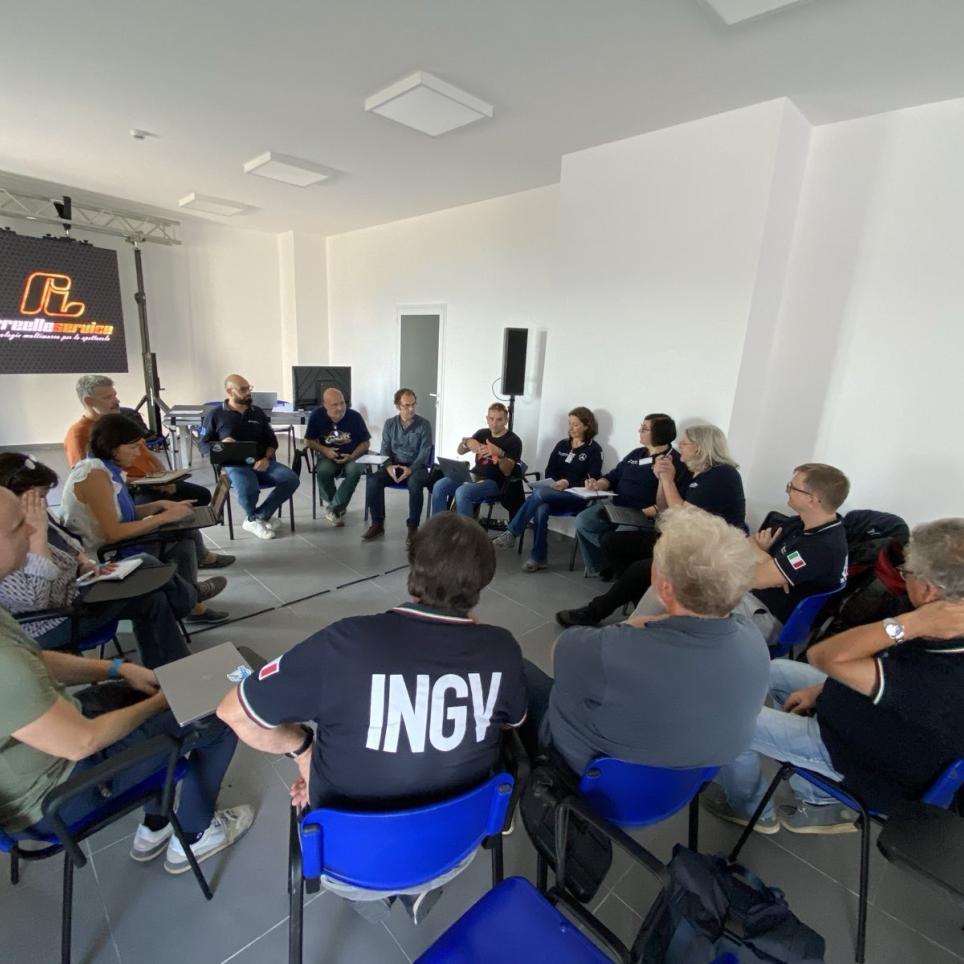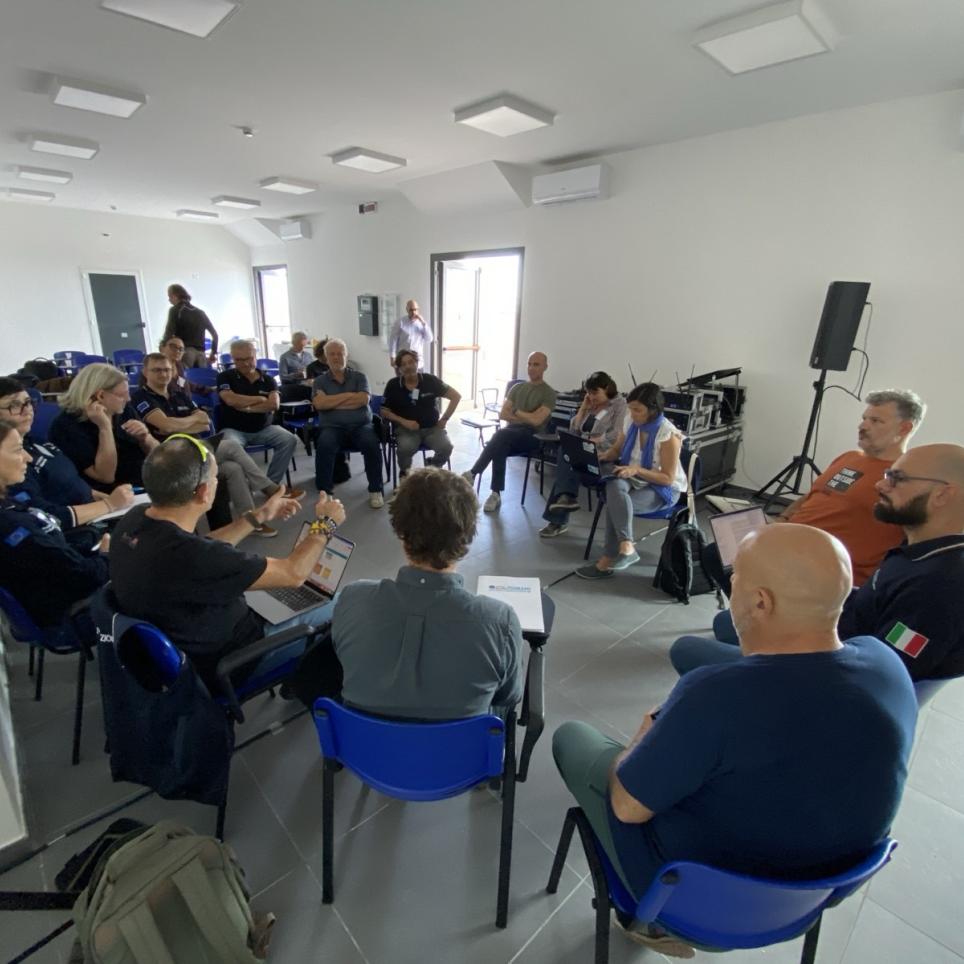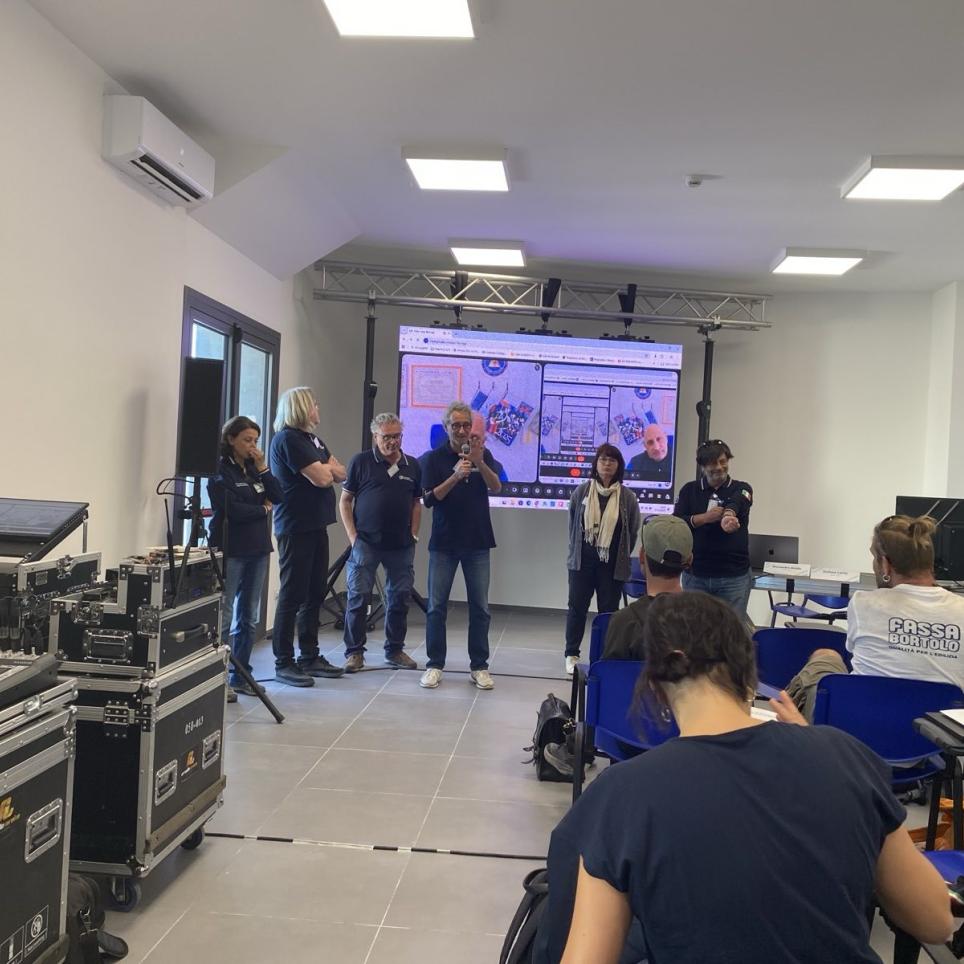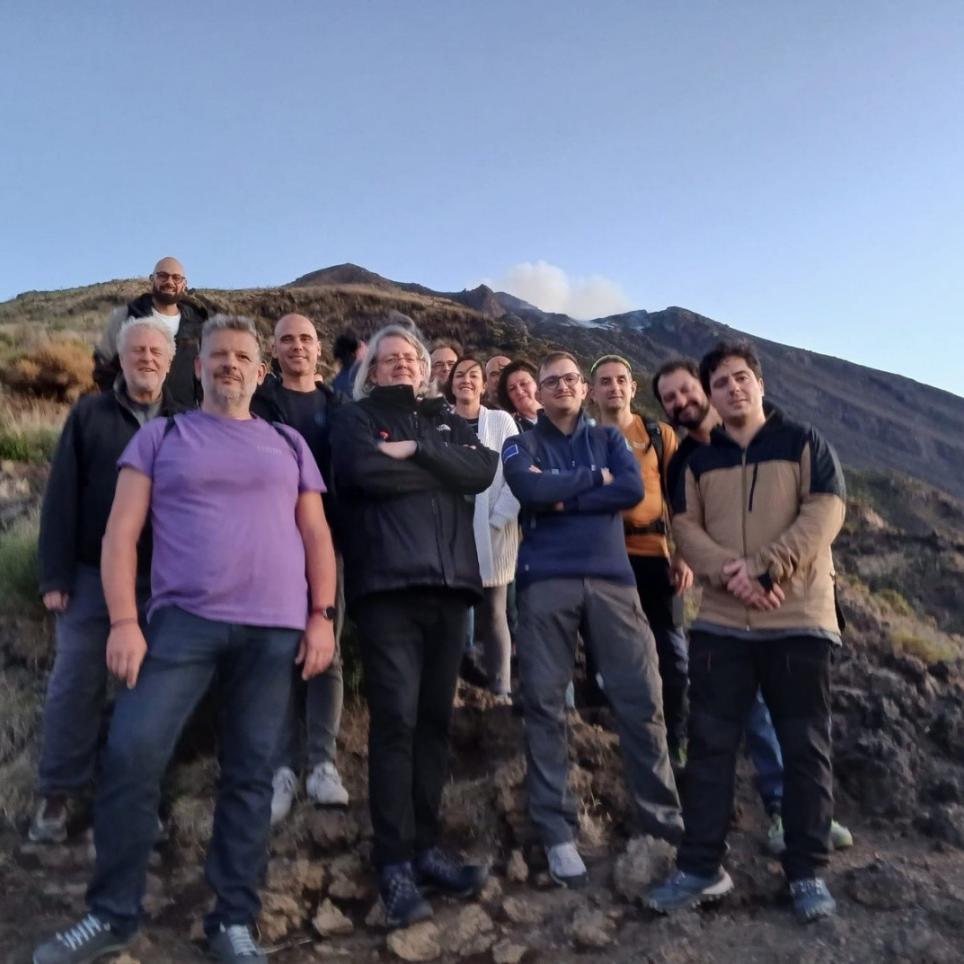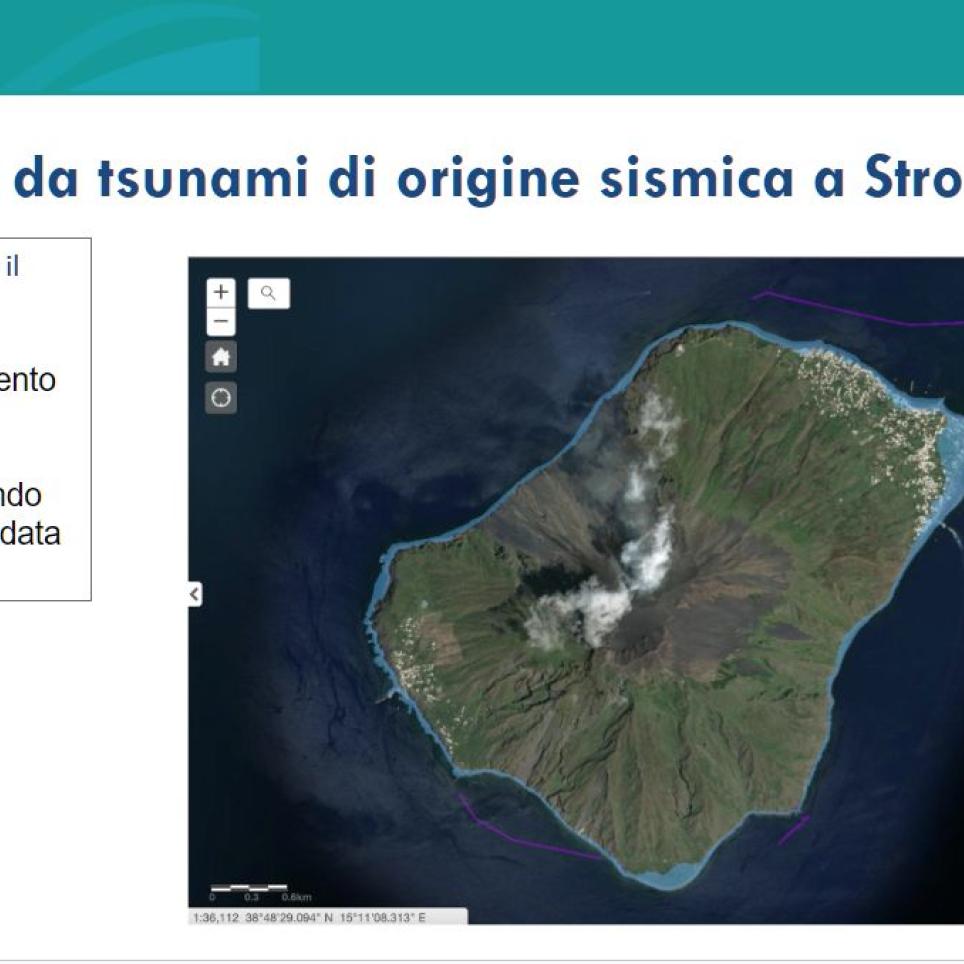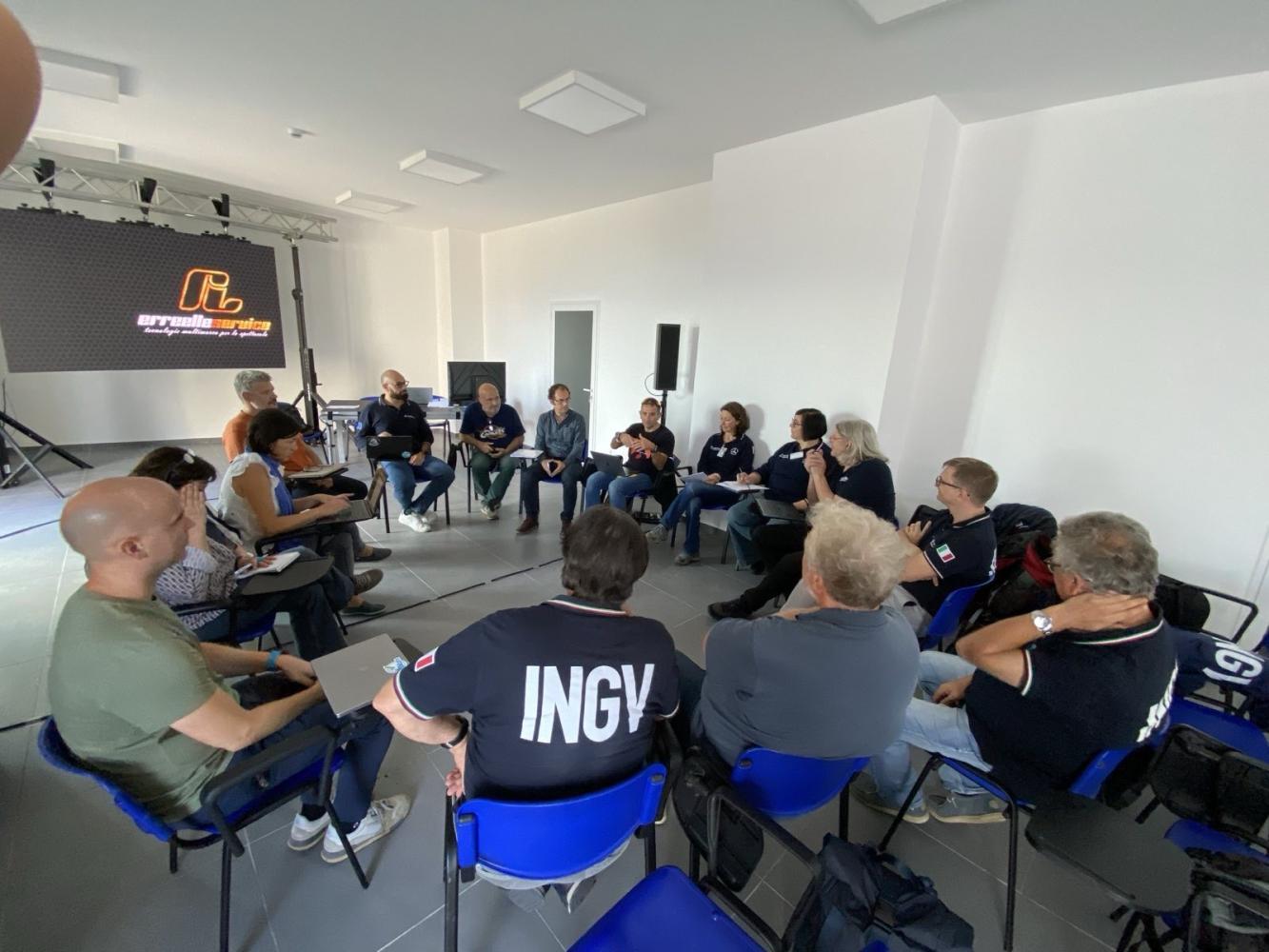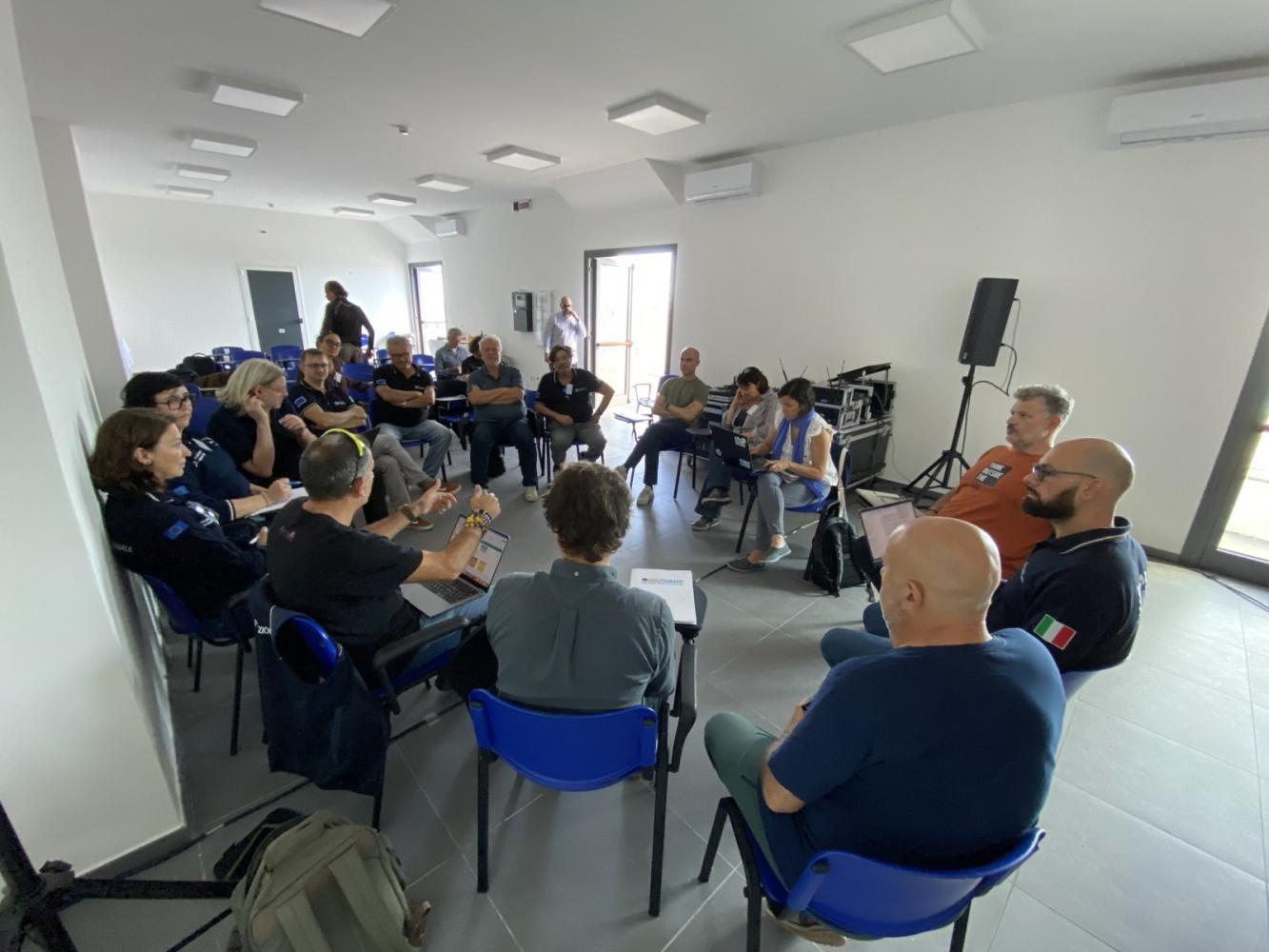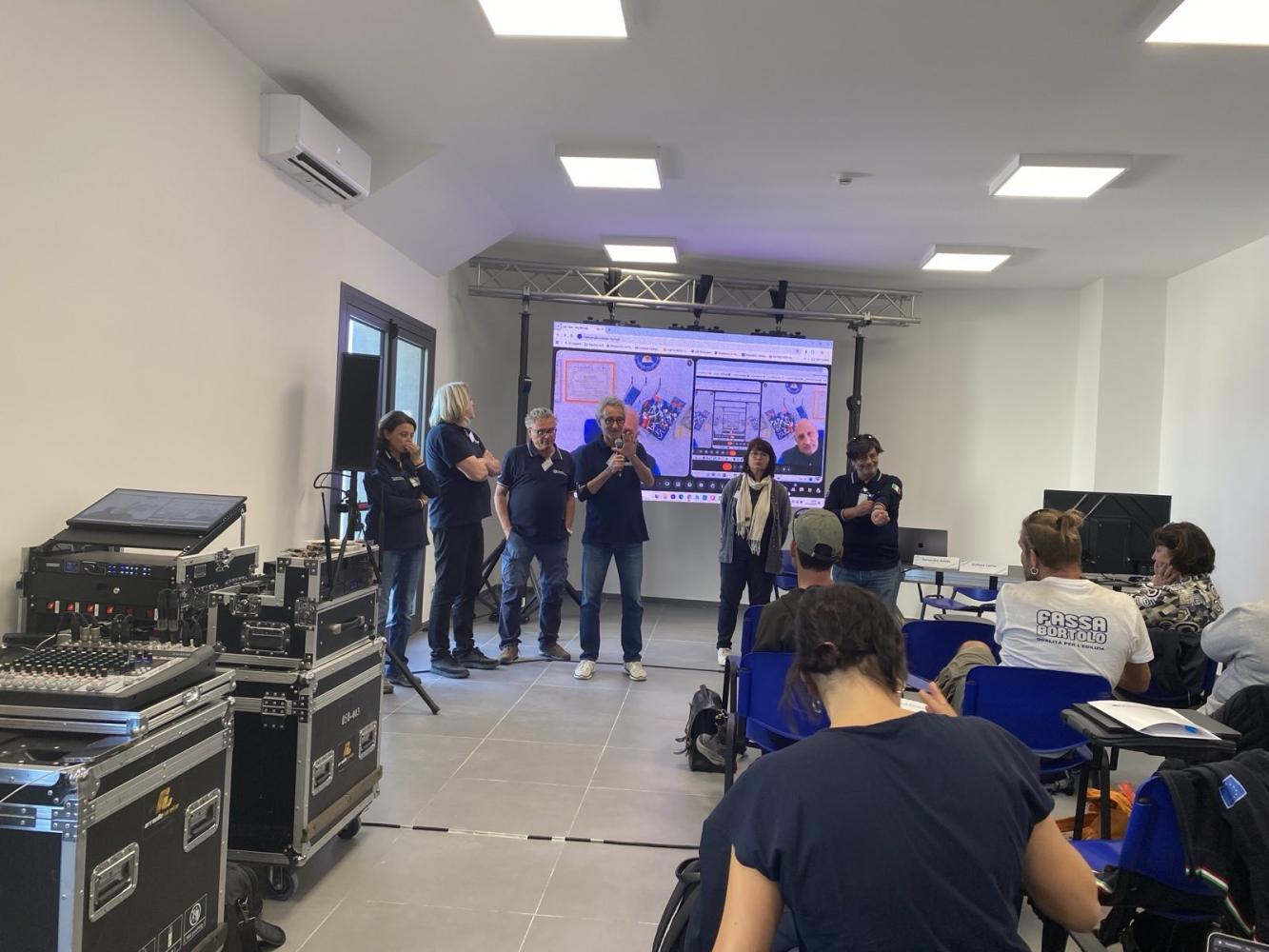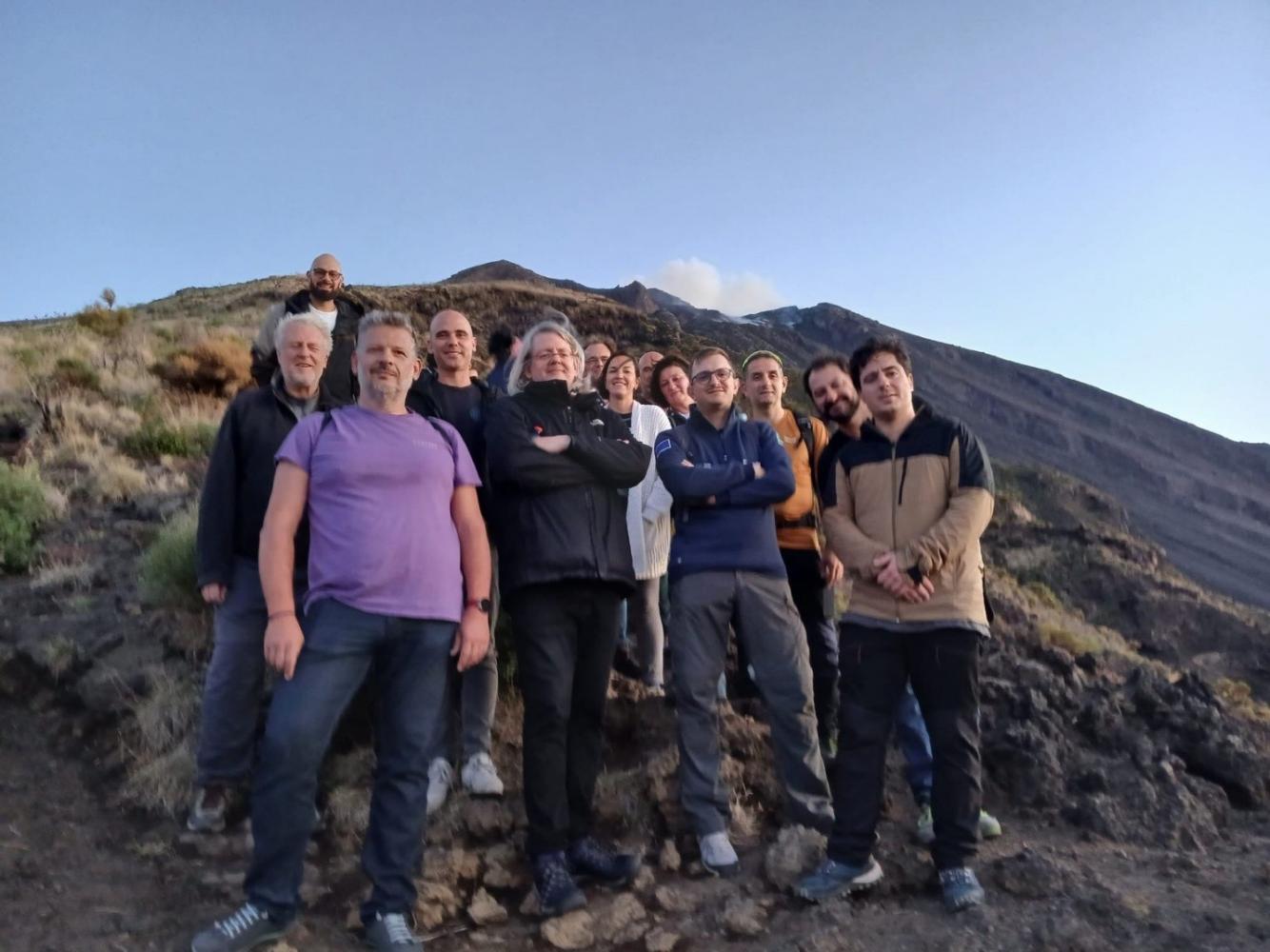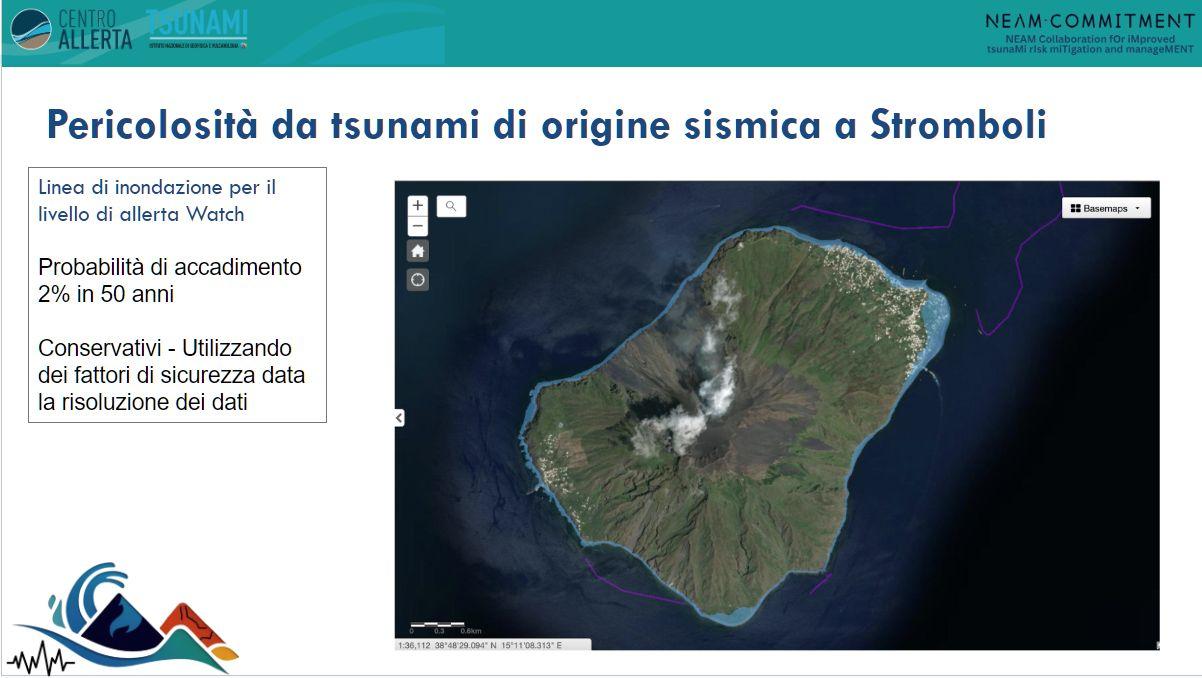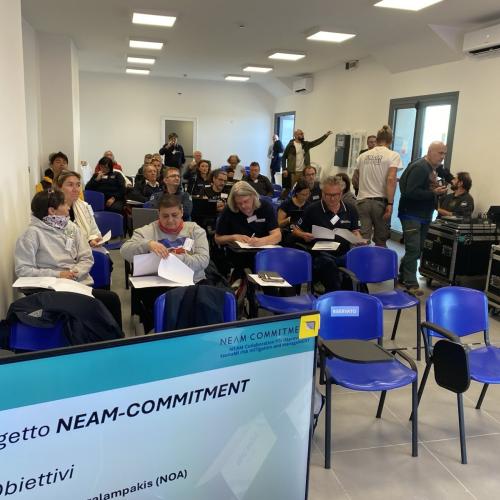
🗞️ NEAM-COMMITMENT EU Project Advances Multi-Hazard Workshop on Stromboli Island – Days 2 & 3
📍Stromboli, Italy – October 8–9, 2025
As the NEAM-COMMITMENT workshop entered its second day, participants immersed themselves in a collaborative and challenging examination of Stromboli’s complex multiple-hazard environment. Building on the momentum of Day 1, the sessions brought together a diverse group of scientists, civil protection authorities, local officials, and community representatives to address the island’s unique risk profile and explore pathways toward more resilient preparedness strategies.
Presentations were delivered, providing a detailed overview of the situation and highlighting and illustrating several key natural and environmental hazards that pose potential risks to the island.
🔍 Key topics addressed included:
🌊 Tsunami hazard assessments focused on both landslide-induced and seismically triggered scenarios. These discussions highlighted the island’s vulnerability to cascading hazards and the necessity for robust early warning systems tailored to local topography and population dynamics.
🌋 Volcanic threats, including preliminary evaluations of pyroclastic flows and ballistic projectile fallout, highlighted the importance of integrating real-time monitoring with community-based response planning.
🔥 Wildfire risks associated with volcanic activity were also examined, underscoring the compound nature of hazards on Stromboli and the operational challenges of managing concurrent emergencies.
🥾 A field excursion to Stromboli Volcano offered a connection to the theoretical work, enabling participants to observe firsthand the island’s terrain, infrastructure, and hazard-prone zones.
The third day was dedicated to a panel discussion, fostering dialogue among technical experts, emergency managers, policymakers, and representatives from the local community. These sessions significantly enhanced the collective understanding of Stromboli’s complex hazard dynamics, while also laying the groundwork for the next steps in co-designing coordinated evacuation strategies that are both scientifically informed and tailored to the specific needs and conditions of the local community.
